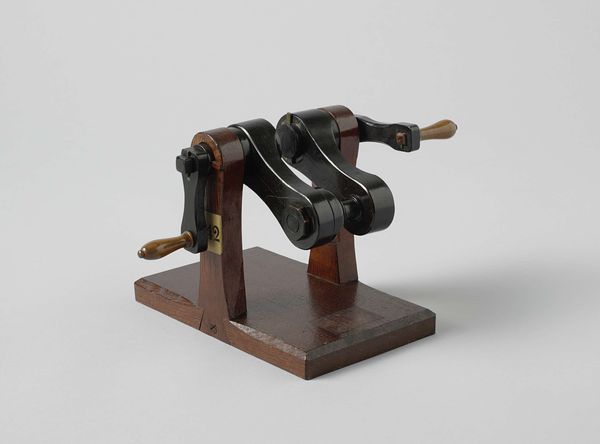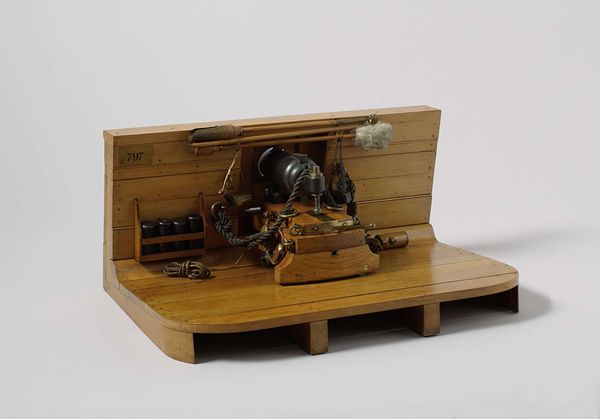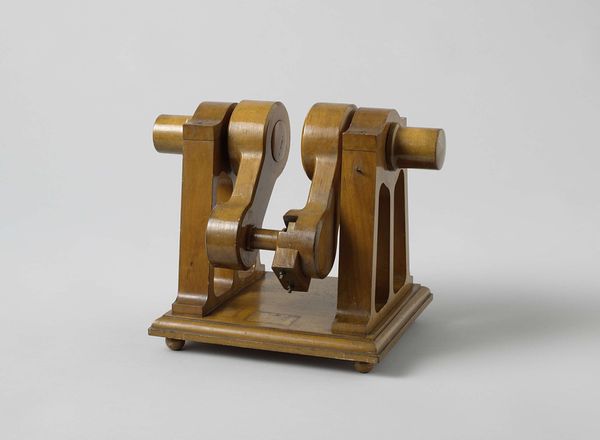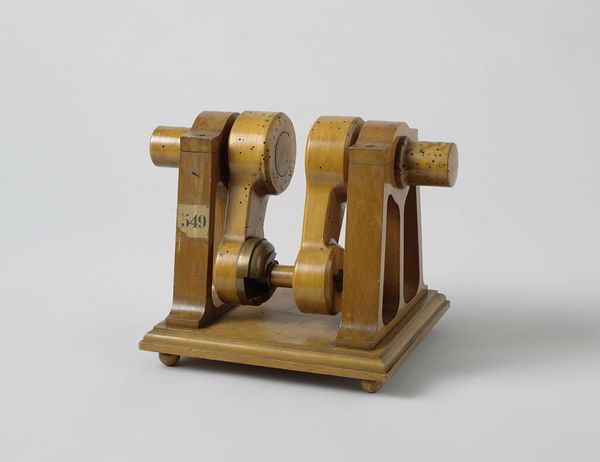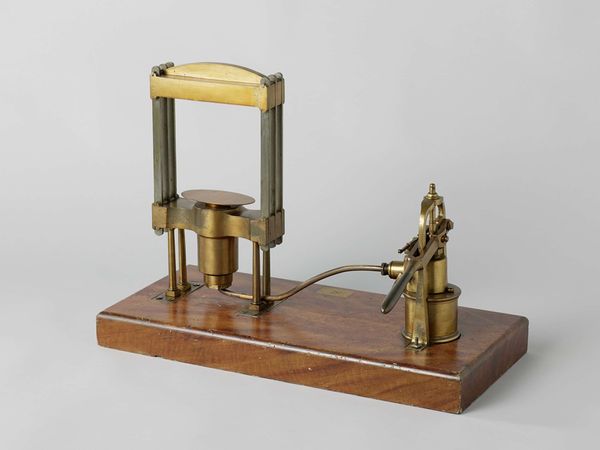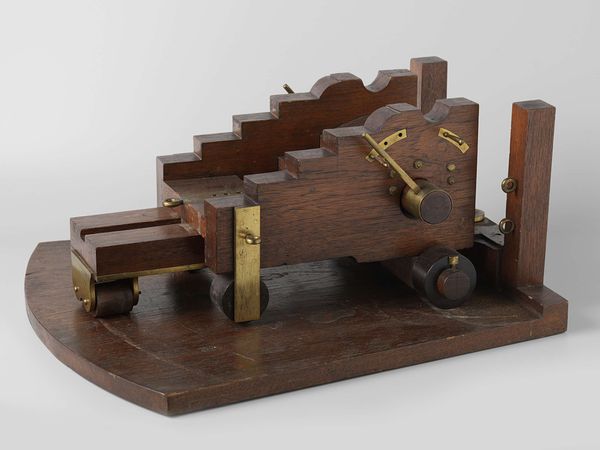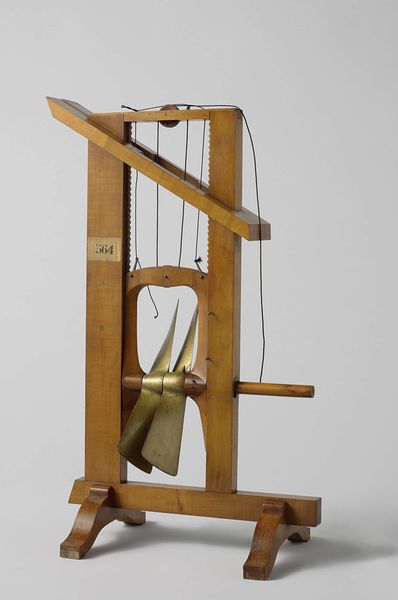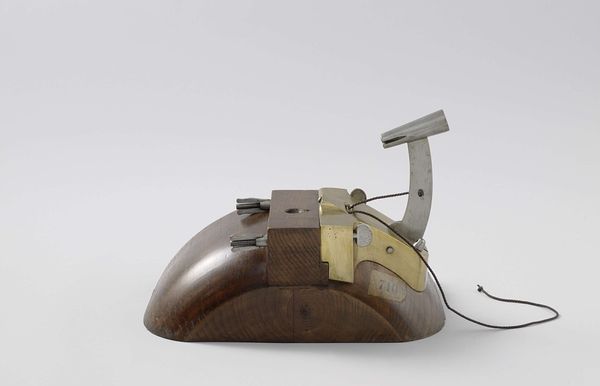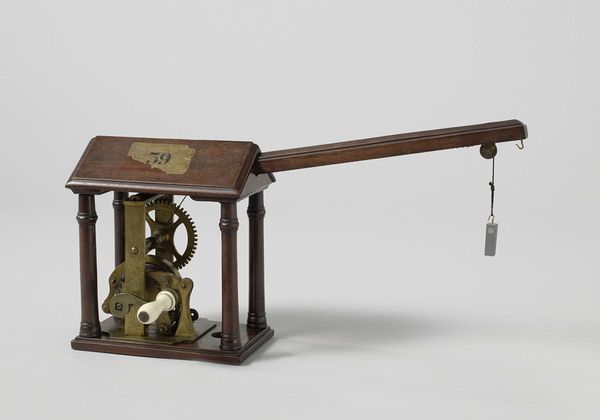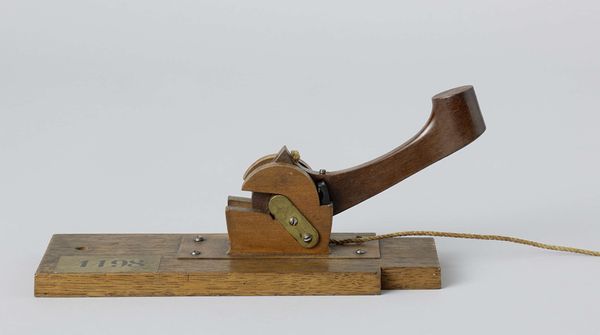
metal, photography, wood
#
studio photography
#
product studio photography
#
product shot
#
3d printed part
#
metal
#
photography
#
product design photgrpaphy
#
prop product design
#
metallic object render
#
wood
#
product photography
#
cut-out
#
product render
Dimensions: model height 27 cm, model width 33.5 cm, model depth 17.4 cm, packaging capsule height 33.5 cm, packaging capsule width 42 cm, packaging capsule depth 22.5 cm
Copyright: Rijks Museum: Open Domain
Curator: This is a photograph depicting a “Model of a Chain Stopper” created around 1831-1833. Editor: My first thought is how much this chain-stopper model looks like an instrument of torture! It's all right angles, heavy chains, and the wood, though warm in tone, doesn’t soften the visual impression of this machine. Curator: Indeed. Chain stoppers were critical inventions in maritime technology. The convergence of material interests and technological innovation are interesting. Chain stoppers improved ship safety. Previously, runaway anchor chains endangered ships, particularly in strong winds or currents. Editor: I see the functional intention of it but I'm particularly struck by the composition, it emphasizes line and form over any sense of narrative or immediate use. It is quite clinical, actually. The chain appears more as a dangling decoration. What do you think about the fact that this functional item can now be perceived and enjoyed as artwork? Curator: Exactly. Viewing it outside its historical context changes its perception. During the 1830s, its innovation held far more societal significance as opposed to now. It protected trade routes, ensured naval effectiveness and supported the ongoing expansion of the colonial world. These chain-stoppers became symbols of progress and even mastery of nature. Editor: Absolutely. Although I also sense in its austere design an unacknowledged element of control. The composition is a study in contrasting textures and weights—the rough metal chain against the smoothly finished wood. Look at how the light emphasizes its components, rendering its three-dimensional appearance in such depth. It’s quite remarkable how it reduces a powerful maritime technology to an exercise in geometry. Curator: What a striking reflection! I'm persuaded that the chain-stopper, while practical, mirrored growing ambition and authority over our environments. Editor: Thanks! Reflecting on its composition helps one acknowledge the tension between intent and form in functional sculpture.
Comments
No comments
Be the first to comment and join the conversation on the ultimate creative platform.
